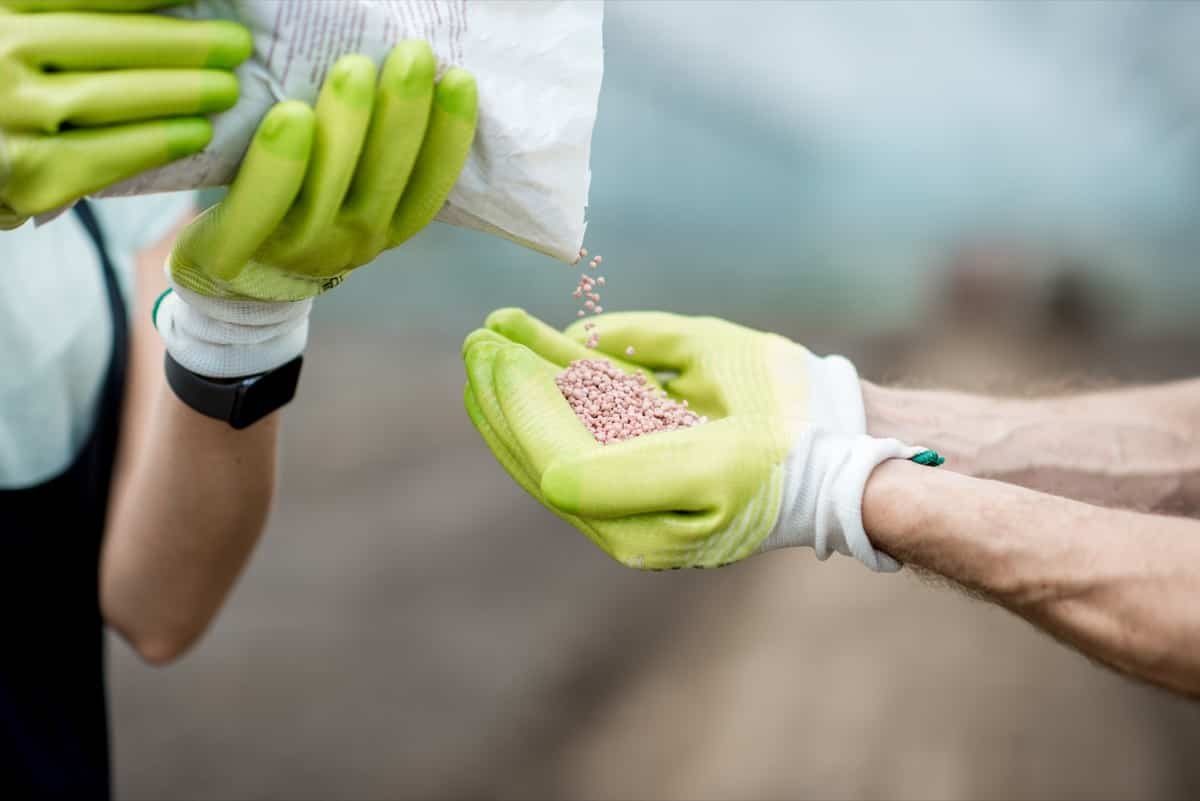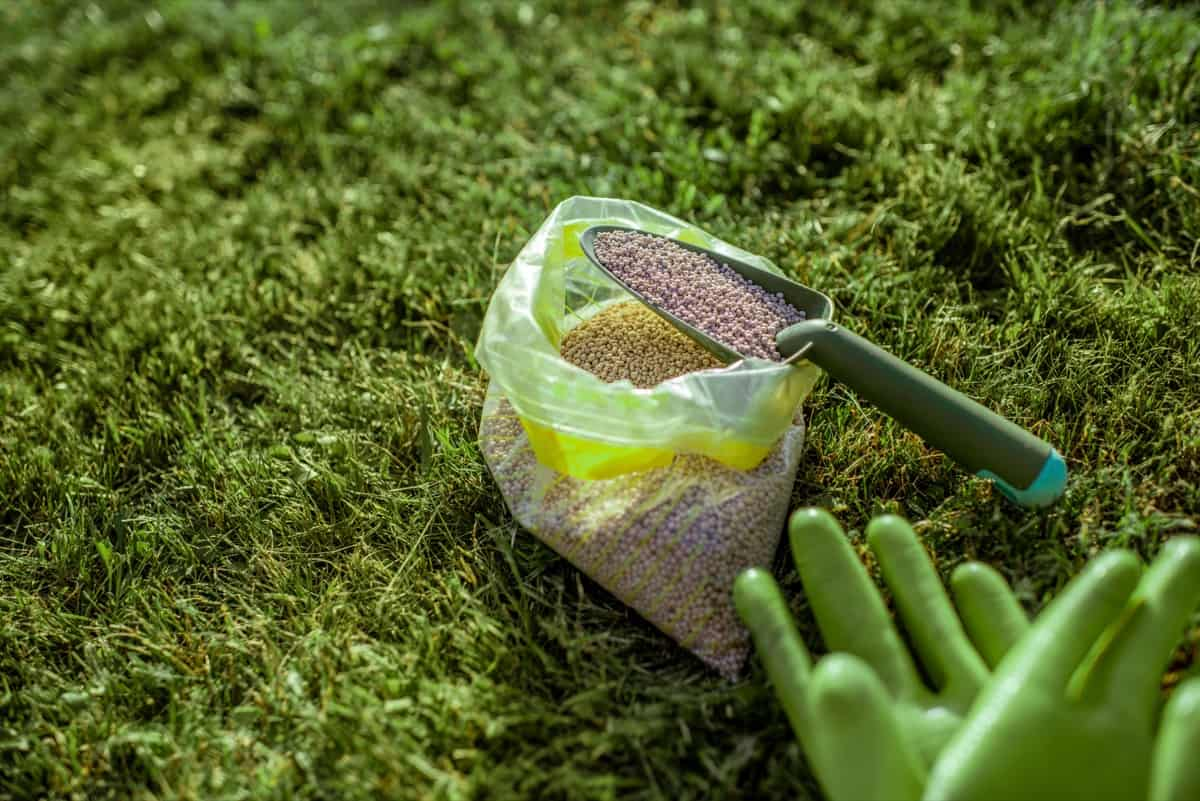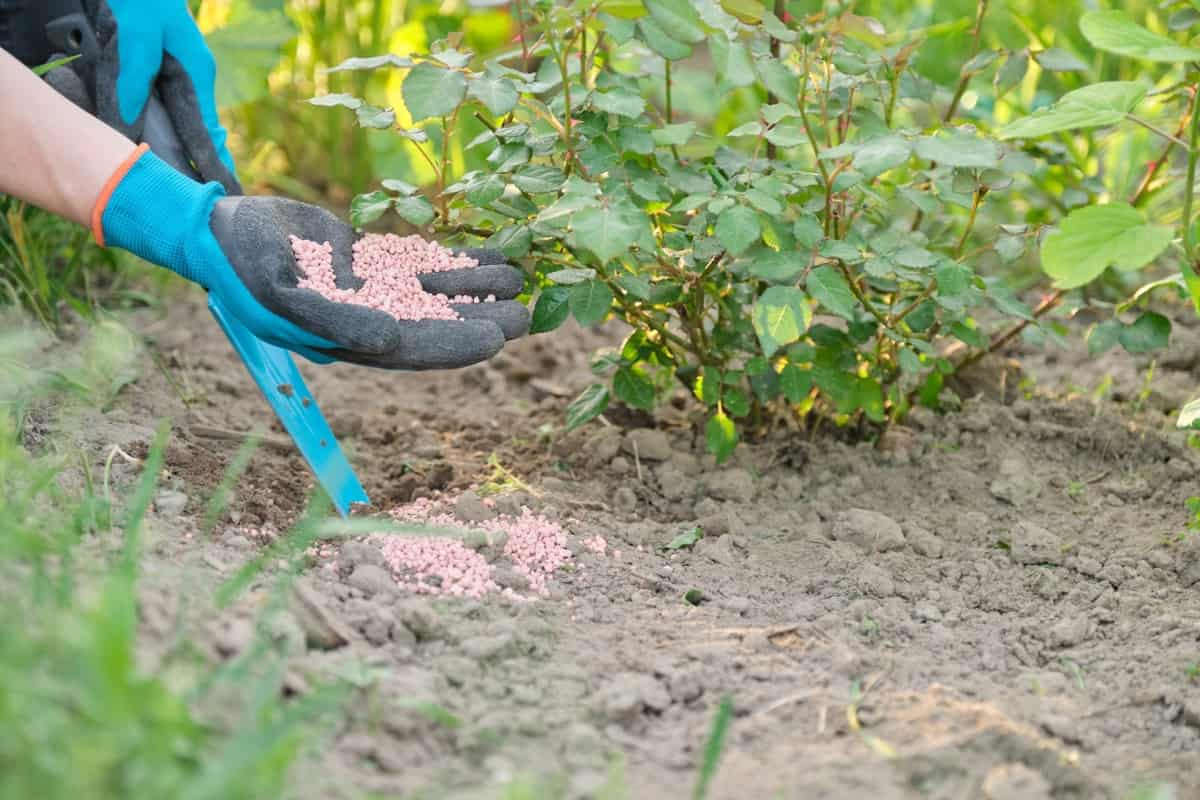Using 15-15-15 fertilizers in your garden can greatly benefit the health of your plants. This balanced blend of nutrients provides essential elements that promote strong root development, lush foliage, and abundant blooms or fruits. By understanding when and how to apply 15-15-15 fertilizer, you can maximize its effectiveness and create a thriving garden.

Remember that using 15-15-15 fertilizer should be combined with other gardening practices, such as proper watering techniques and pest control measures, for optimal results. Regular monitoring of plant health is also crucial so you can adjust fertilization if needed.
Understanding the Composition of 15-15-15 Fertilizer
Regarding nourishing your garden, 15-15-15 fertilizer is popular among many gardeners. What is 15-15-15 fertilizer? The numbers on a bag of 15-15-15 fertilizer represent the percentage by weight of three essential nutrients: nitrogen, phosphorus, and potassium. Each nutrient plays a crucial role in plant growth and development. Nitrogen is responsible for promoting lush green foliage and overall plant health. Phosphorus aids in root development, flowering, and fruit production.
Potassium helps improve disease resistance and strengthens plants against environmental stressors. With equal amounts of these three nutrients, 15-15-15 fertilizer provides a balanced blend that can benefit various plants in your garden. It’s like giving your plants an all-in-one vitamin boost. But remember, not all plants have the same nutritional needs. Some may require more nitrogen for leafy growth, while others might need extra phosphorus for blooming flowers or developing fruits. Understanding your specific plants’ requirements is crucial for optimal results.
The Benefits of 15-15-15 Fertilizer in Your Garden
15-15-15 fertilizer is a versatile and balanced option that offers numerous benefits for your garden. One of the main advantages of using this type of fertilizer is its equal ratio of nitrogen, phosphorus, and potassium. This balanced composition ensures that plants receive all the essential nutrients for healthy growth.
Nitrogen promotes vigorous foliage development, resulting in lush green leaves. Phosphorus plays a crucial role in root development and overall plant health. It also aids in flower formation and enhances fruit production. Potassium strengthens plants’ immune systems, making them more resistant to diseases and pests.
Another benefit of 15-15-15 fertilizer is its versatility across different types of plants. Whether you have flowering ornamentals or leafy vegetables, this fertilizer can provide the necessary nutrients to support their specific requirements. Furthermore, using 15-15-15 fertilizer can improve soil fertility by replenishing essential nutrients that may be depleted over time due to plant uptake or leaching. This helps maintain optimal soil conditions for plant growth.
In case you missed it: Benefits of 20-20-20 Fertilizer for Your Garden: How to Use and When to Apply

When to Apply 15-15-15 Fertilizer for Optimal Results
Generally, it’s best to apply 15-15-15 fertilizer during the active growing season, when plants actively take up nutrients from the soil. You can start applying 15-15-15 fertilizer for established plants once they have developed a strong root system and are actively producing new growth. This usually occurs after the last frost date in your area.
Annual flowers and vegetables benefit from an initial application of 15-15-15 fertilizer at planting time or shortly after transplanting. This helps provide them with essential nutrients as they establish themselves in their new environment. Following up with additional applications every four to six weeks is important to maintain healthy growth throughout the growing season.
Preparing Your Garden for 15-15-15 Fertilizer Application
Properly preparing the soil is important before applying 15-15-15 fertilizer to your garden. Start by removing any weeds that may be present. This will help ensure the fertilizer can reach the plant roots more effectively. Next, consider conducting a soil test to determine its nutrient levels and pH balance.
This will provide valuable information on what specific nutrients your plants may need and if any adjustments are necessary before applying the 15-15-15 fertilizer. Once you have cleared the area and assessed your soil, it’s time to apply organic matter such as compost or well-aged manure. These additions help improve soil structure, drainage, and water retention – all of which contribute to healthier plant growth.
After incorporating organic matter into the soil, evenly spread the 15-15-15 fertilizer throughout your garden beds or around individual plants according to package instructions. Be careful not to overapply, as this can harm plants rather than benefit them. To ensure proper absorption of nutrients, lightly rake or till the surface of the soil after fertilizing. This helps incorporate the granules into the top layer, where they can easily dissolve and become available for uptake by plant roots.
Applying 15-15-15 Fertilizers to Different Types of Plants
For flowering plants, such as Roses or Hibiscus, apply 15-15-15 fertilizer during their active growing season. This will give them the nutrients for vibrant blooms and strong stems. Be sure to follow package instructions for application rates based on the size and age of your plants. Leafy greens like Lettuce or Spinach benefit from regular applications of 15-15-15 fertilizer throughout their growing season.
These nutrient-rich vegetables thrive in nitrogen-rich environments, which help promote leaf development and overall plant vigor. Fruit-bearing trees like Citrus or Apple trees require a balanced nutrient profile provided by 15-15-15 fertilizers during their dormant phase and active growing period. Apply the fertilizer in early spring, then again in late summer or early fall to support fruit production.
In case you missed it: How to Use 16-16-16 Fertilizer in Your Garden: Benefits and When to Apply

Tips for Properly Mixing and Diluting 15-15-15 Fertilizer
Always read the instructions on the fertilizer packaging carefully. The manufacturer will recommend how much fertilizer to use per gallon of water, which will vary depending on the specific brand and formulation. To mix the fertilizer, fill a clean bucket with water. Using clean containers is important as any residue from previous chemicals could contaminate the mixture. Then, add the appropriate amount of 15-15-15 fertilizer according to the instructions.
Stir or shake vigorously to ensure that the fertilizer dissolves completely in water. This step is essential as undissolved particles can clog irrigation systems or result in uneven application. Once mixed, allow the diluted solution to sit for a few minutes before using it in your garden. This allows any remaining undissolved particles to settle at the bottom of the container so that you don’t accidentally pour them onto your plants. Cover all areas evenly when applying 15-15-15 fertilizer with a watering can or sprayer without over-saturating or causing runoff.
How 15-15-15 Fertilizer Affects Soil pH Levels
Applying 15-15-15 fertilizer to your garden can affect the soil’s pH differently depending on its composition. Some fertilizers may be acidic, while others may be alkaline. The NPK 15-15-15 fertilizer ratio indicates an equal balance of nitrogen, phosphorus, and potassium in the fertilizer. If your soil is already acidic, using a 15-15-15 fertilizer with an acidic nature could further lower the pH level. On the other hand, if your soil is alkaline, using this type of fertilizer might help neutralize it slightly.
Maintaining the appropriate pH level for your plant’s needs is essential as it directly influences its ability to absorb nutrients from the soil. To determine whether your chosen 15-15-15 fertilizer will impact your garden’s pH positively or negatively, perform regular soil tests before application. Adjusting the acidity or alkalinity of your soil requires careful consideration based on plant preferences and existing conditions.
The Role of Micronutrients in 15-15-15 Fertilizer
While the three main macronutrients (nitrogen, phosphorus, and potassium) are essential for plant growth, micronutrients are equally important. These trace elements include iron, zinc, manganese, copper, boron, molybdenum, and chlorine. They are needed in smaller quantities than macronutrients but are just as vital for plants’ overall development.
Iron is necessary for chlorophyll production and aids in photosynthesis. Zinc helps with enzyme function and assists plants in metabolizing carbohydrates. Manganese supports healthy root systems and plays a role in nitrogen metabolism. Copper contributes to reproductive growth, while boron promotes cell division and carbohydrate transport. Molybdenum helps convert nitrogen into a usable form by plants, while chlorine is involved in osmosis regulation.
In case you missed it: How to Use 19-19-19 Fertilizer in Your Garden: Benefits and When to Apply

Using 15-15-15 fertilizer that contains micronutrients like those mentioned above ensures that your plants have access to everything they need for optimal health and productivity. Remember that different plants have varying nutrient requirements; therefore, it’s important to consider specific needs when applying fertilizers containing micronutrients.
Potential Risks and Precautions When Using 15-15-15 Fertilizer
One risk is nutrient burn, which occurs when plants are exposed to excessive nutrients. This can cause leaf discoloration, wilting, and even plant death. To avoid this, always follow the recommended application rates on the fertilizer label and never exceed the suggested dosage. Another risk is water pollution. If excess fertilizer leaches into nearby water bodies through runoff or drainage systems, it can contribute to harmful algal blooms and degrade aquatic ecosystems.
To prevent this, apply fertilizers only when there is no imminent rainfall, and do not overwater your plants. Additionally, excessive use of synthetic fertilizers like 15-15-15 can disrupt soil microbial activity and reduce beneficial organisms that promote healthy plant growth. Consider incorporating organic amendments into your gardening practices to maintain a balanced soil ecosystem. Furthermore, improper storage or handling of fertilizers can harm human health.
Alternatives to 15-15-15 Fertilizer for Specific Plants or Soil Conditions
Different plants and soil conditions have unique nutrient requirements that may not be adequately met by a general-purpose fertilizer like 15-15-15. An acidic fertilizer with a lower pH level is essential for acid-loving plants such as Azaleas and Blueberries. Look for products labeled specifically for these plant types or organic alternatives like coffee grounds or pine needle mulch, which naturally acidify the soil. If you have sandy soil, consider using slow-release fertilizers that gradually release nutrients.
In contrast, clay soils tend to retain moisture and nutrients but can become compacted easily. To improve drainage and loosen the soil structure, incorporating organic matter like compost or well-decomposed manure into the planting area can provide valuable nutrition while improving overall soil health. For those practicing organic gardening methods, various natural alternatives are available, such as seaweed extract, fish emulsion, bone meal, or blood meal. These options offer a rich source of micronutrients without relying on synthetic chemicals.
Monitoring and Adjusting the Effects of 15-15-15 Fertilizer on Your Garden
Monitoring and adjusting the effects of 15-15-15 fertilizer on your garden is essential for maintaining healthy plant growth. Once you’ve applied the fertilizer, keeping a close eye on your plants to ensure they respond well to the nutrients is important. Start by monitoring the overall health of your plants. Look for signs of vibrant foliage, strong root development, and increased flowering or fruit production.
In case you missed it: When and How to Fertilize Your Vegetable Garden

Depending on your plant’s needs, you may need to make amendments with additional fertilizers or organic matter. Observe how quickly or slowly water drains through your soil after applying the 15-15-15 fertilizer. Poor drainage can lead to nutrient imbalances and root rot in plants. Adjust watering schedules accordingly and consider adding organic matter like compost to improve drainage.
Look for any nutrient deficiencies or excesses in your plants’ leaves. Nutrient deficiencies can manifest as discoloration (such as yellowing), while excesses can cause burnt leaf tips or wilting foliage. Consider keeping a gardening journal where you track changes in plant growth, nutrient applications, and any observations you make over time. This will help you identify patterns and make informed decisions about adjusting fertilization practices in future seasons.
Storing and Handling 15-15-15 Fertilizer Safely
When storing 15-15-15 fertilizer, keep it in a cool, dry place away from direct sunlight. This will prevent moisture buildup and preserve its nutrient content. Make sure to store it out of reach of children and pets, as fertilizers can be harmful if ingested. To handle the fertilizer safely, wear protective gloves and clothing to avoid skin contact. Using goggles or a face shield when mixing or applying the fertilizer is also advisable to protect your eyes from any potential splashes.
Avoid inhaling dust particles in a well-ventilated area when opening bags or containers. If you accidentally inhale or ingest any fertilizer, seek medical attention immediately. Always follow the manufacturer’s instructions for proper dilution ratios when mixing 15-15-15 fertilizer with water. Over-application can lead to nutrient imbalances in your soil, potentially harming your plants. After use, securely seal the packaging to prevent moisture absorption and contamination.
Sustainable Practices for Using 15-15-15 Fertilizers in Your Garden
When it comes to gardening, sustainability should always be a key consideration. While using 15-15-15 fertilizer can provide numerous benefits for your plants, it’s important to ensure that you’re using it in an environmentally responsible way. One sustainable practice is to use organic or slow-release versions of the 15-15-15 fertilizer. These alternatives reduce the risk of nutrient runoff and minimize the impact on waterways and ecosystems.
Additionally, they release nutrients gradually over time, providing a steady supply for your plants without overwhelming them. Another sustainable approach is to apply fertilizers only when necessary. Conduct regular soil tests to determine which nutrients are lacking and adjust your application accordingly. Over-fertilization wastes resources, can harm beneficial soil organisms, and lead to nutrient imbalances.
Consider incorporating compost or other organic matter into your garden beds before applying 15-15-15 fertilizer. This helps improve soil structure, retain moisture, and enhance nutrient availability naturally. Incorporating cover crops between planting seasons can also help replenish nutrients naturally by fixing nitrogen from the air into the soil. This reduces reliance on synthetic fertilizers while improving long-term soil health. Proper watering practices are essential for sustainable fertilizer use.
In case you missed it: How to Make Grass Clippings Compost Fertilizer: Homemade Recipe, DIY for Container, Indoor, and Backyard Garden Plants

Conclusion
Using 15-15-15 fertilizers in your garden can provide numerous benefits and help promote healthy plant growth. Its balanced composition of essential nutrients ensures plants receive the nourishment they need to thrive. Understanding when and how to apply this fertilizer can maximize its effectiveness and ensure optimal results. Remember to prepare your garden beforehand, dilute the fertilizer properly, and consider the pH levels of your soil.
Remember, successful gardening requires experimentation and adaptation based on individual needs. With proper knowledge and care, incorporating 15-15-15 fertilizers into your gardening routine can contribute to lush landscapes and bountiful harvests.
- Broccoli Seed Germination and Selection
- Asparagus Seed Germination and Variety Selection
- Seasonal Flower Gardening: Best Practices for Spring, Summer, Fall, and Winter
- How to Grow Hibiscus from Flower
- Plantation Ideas for Home Decoration: A Beginners Guide
- Flower Garden Designs and Layouts for Beginners
- Planting and Spacing Techniques in Papaya: A Beginner’s Guide
- Growing Gold: Essential Techniques for Planting Pineapples
- How to Make Kalanchoe Plant Bushy: Home Remedies and Solutions
- 11 Reasons Why Your Gardenia is Not Blooming: Home Remedies and Solutions
- Eco Elegance: The Guide to Designing a Drought-Tolerant Landscape
- Gardening on a Slope: Strategies for Hillside Landscaping
- Nourish and Flourish: Top Organic Mulches for Thriving House Plants
- Everything You Want to Know about Indian Mogra Flower: Discover Uses and Growing
- Green Thumb Success: Expert Tips for Cultivating Greenhouse Pumpkins All Year Round
- Maximize Growth & Flavor: The Ultimate Guide to Companion Planting in Herb Gardens
- How to Control Rhododendron Problems Naturally: Home Remedies and Organic Ways to Fix Them
- Natural Magic: The Remarkable Benefits of Cinnamon for Plants
- Best Steps to Revive Dying Tulip with Natural and Organic Treatment
- 10 Reasons Why Your Angel Trumpet is Not Blooming: Remedies and Treatment
- How to Fix Periwinkle Leaf and Flower-Related Problems: Natural Remedies and Solutions
- How to Fix Zinnias Leaf and Flower Problems: Discover Natural and Home Remedies
- Organic Steps to Induce Lemon Tree Flowers: A Comprehensive Guide
- Bloom Booster: Crafting the Perfect Homemade Bougainvillea Fertilizer
- Optimizing Growth: A Guide to Applying NPK Fertilizer for Potted Plants
- 10 Best Homemade Fertilizers for Rubber Plant: DIY Recipes and Application Method
- How to Boost Female Pumpkin Flowers: Effective Steps for More Flowers and High Yields
- Transform Your Indoor Garden: Top Benefits of Pink Salt for Houseplants
- 10 Best Homemade Fertilizers for Peacock Plants (Calathea): Easy DIY Guide
- Unlock Blooms: 9 Reasons Why Your Potted Chrysanthemum is Not Blooming
- 8 Reasons Why Your Potted Hibiscus is Not Blooming: Fix it with Simple Solutions
- Unlock Blooms: 9 Key Reasons Your Potted Frangipani Won’t Flower
- 10 Reasons Why Is My Ice Plant Not Blooming: Remedies and Treatment
- 10 Reasons Why My Potted Hydrangea Not Blooming: Treatment and Remedies
- 10 Reasons Why is My Wisteria Not Blooming: Remedies and Treatment
- 10 Reasons Why is My Goldfish Plant Not Blooming: Remedies and Treatment